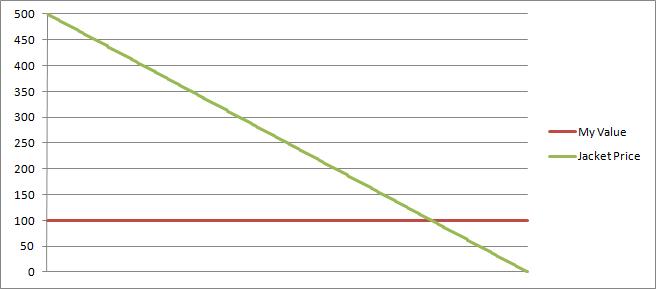Growth is an area for startups that is traditionally aggressively short-term focused. Development cycles are quick, results are measured in experiments as soon as things go out, and we react to all this data. Because of the nature of most startups, most marketing or growth tactics focus on acquisition as well. Getting more people in the door is almost every startup’s biggest issue.
This creates some challenges to doing long-term effective growth. I’ll highlight a few examples I’ve run into, and one tip on evaluating the more nuanced balance between short and long term growth.
At GrubHub, we added a feature for someone to sign up as a guest and order very early on as a company. The reasoning for this was simple. The easier we made it for someone to check out (or the easier it was perceived), the more likely an order would be completed and we’d make money. People visiting GrubHub are hungry, and hunger and patience don’t typically co-exist well.
Way off into the future, we started noticing our one month repeat purchase rate for new diners started to sink below our previous year’s levels. This had never happened before. We’d also continued to growth our repeat purchase rates year over year. Obviously, we were bringing in more new diners, so we thought it could be a natural decline in quality as you target less early adopters and a bigger base. So, the first thing we looked at was our repeat purchase rates by referral source. Most of our referral sources were down, so it wasn’t one new channel that was causing this.
Then, we cut the data by guest vs. Facebook vs. account creations. Over half of our new diners joined as guests. When looking at the data this way, it was clear that guest repeat purchase rate was declining rapidly, but the other types of accounts were doing well with driving repeat purchasers. So, we faced a decision. Do we remove the ability to order as a guest and potentially lose half of our new diners?
We decided to test redesigning the signup page, amplifying the value of creating an account, and hiding the guest option at the very bottom with a link that said “I don’t like convenience. Sign me in as a guest.” We monitored overall conversion rate, and repeat purchase rate. What we found is that conversion rate did not decrease and the types of diners that were creating guest accounts historically began creating real accounts. What we also found is that our repeat purchase rate went back up. Something about selling the value of GrubHub as a service and not just a one time transaction made these people stick around. This was the first time we learned that something we did to make it harder to acquire a new customer could actually beneficial for our business over the long term.
We had a similar issue on the paid marketing side once at GrubHub. It might sound silly now, but group buying sites were all the rage as distribution channels a few years ago. The organization really wanted to try it as a way to boost demand in emerging markets for us. We had never really discounted our product before, so there were some serious concerns as to the long term effect of that, but we tried it anyway.
We gave $10 off $20 worth of food at any restaurant, and we got a ton of new customers. Those that used the coupons the first week also became great customers of GrubHub. Our one month repeat purchase rate for them was great. The company quickly wanted to scale the program to other cities. But I had recently instituted a new way to track any marketing initiative. The process was to track every initiative after one week, one month, and six months. Our one week and one month data was great, but when we did our six month look back on these sites, the data changed. What happened was that the people that used the coupon immediately were still good customers, but the many people who waited until the coupon was expiring to use it were not. They never returned. So, the overall program had a poor LTV that did not justify the acquisition costs.
I highlight these two examples to point out that it’s easy to sacrifice the long term growth of a startup with short term measurement and initiatives. Don’t be fooled. Measure everything you’re doing on short and long term effects, and think about the long term impact of something you might implement to shoot up short term numbers. Don’t let acquisition zeal ruin your retention. The one week, one month, six month rule is a great way to prevent short term growth decisions from taking you down a negative path. Find out what those cycles are for your business, and be diligent about measuring them for any acquisition channel you try.
